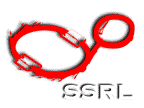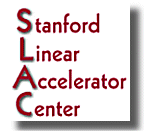| Recent
Advances in Medical Applications of Synchrotron Radiation Stanford Synchrotron Radiation Laboratory March 4-5, 2002 Program Director: Edward Rubenstein |
| Keith Hodgson |
| James Rubenstein |
| Katsuhito Yamasaki |
| Helene Elleaume |
| Giuliana Tromba |
| Wolf-Rainer Dix |
| Kazuki Hyodo |
| Barton Lane |
| William Thomlinson |
| Hiroshi Sugiyama |
| < font face="Verdana, Arial, Helvetica, sans-serif" size="2">Joseph Roberson |
| Masami Ando |
| John Kinney |
| Avraham Dilmanian |
| Dean Chapman |
| Zhong Zhong< /font> |
| Brenda Laster |
| Roman Tatchyn |
| Pau l Csonka |
|
New
Results of the Large Human Study on Intravenous Coronary Angiography
with Synchrotron Radiation
W.-R.Dix(a), W.Kupper(b), M.Lohmann(c), J.Metge(a), B.Reime(a), E.Rubenstein(d) (a)HASYLAB at DESY, Hamburg, Germany (b)Heart Center, Bad Bevensen, Germany (c)University of Siegen, Dept. of Physics, Germany (d)Stanford University School of Medicine, Stanford CA, USA |
| The
method of dichromography with synchrotron radiation was first developed
at SSRL. It was applied for intravenous coronary angiography, and
the first human subjects were examined in 1986. Meanwhile the investigation
of patients using this technique are performed at several synchrotron
radiation laboratories. The method allows the visualization of very
low contrast of iodine down to a mass density of 1 mg/cm², corresponding
to a dilution of the contrast agent by a factor of 40 in small coronary
arteries of 1 mm in diameter. At the Hamburger Synchrotronstrahlungslabor HASYLAB at DESY in Hamburg, the NIKOS-system was developed for the new method. To date a total of 379 patients were investigated with the system with 230 of the 379 patients in cluded in a study with a fixed protocol. The goal of the study was validation of the intravenous method versus conventional selective coronary angiography with the hypothesis that satisfactory diagnostic quality for follow-up patients can be reached with the new intravenous method compared to the conventional selective one. As a result, the independent reviewers reached a positive predictive value of 83% for all segments of all target vessels including side branches down to 0.8mm in diameter, stents and bypasses, and a negative predictive value of 96%. Furthermore, the intravenous coronary angiography is compared with the competing methods such as MRI, EBCT and MSCT. The advantages and disadvantages of the different methods are determined. One major advantage of MRI is the possibility of determining not only the morphology , but also function parameters such as perfusion, vitality and cardiac function. It is therefore possible that this same information might be determined from the study of intravenous angiograms. Very preliminary results are promising. Overall the work shows that the method will not replace selective coronary angiography but it could be used for several applications without risk and with go od results to the patients. One obvious application is the control of stents. Another interesting application could be early and late post-operative control of bypasses. |



